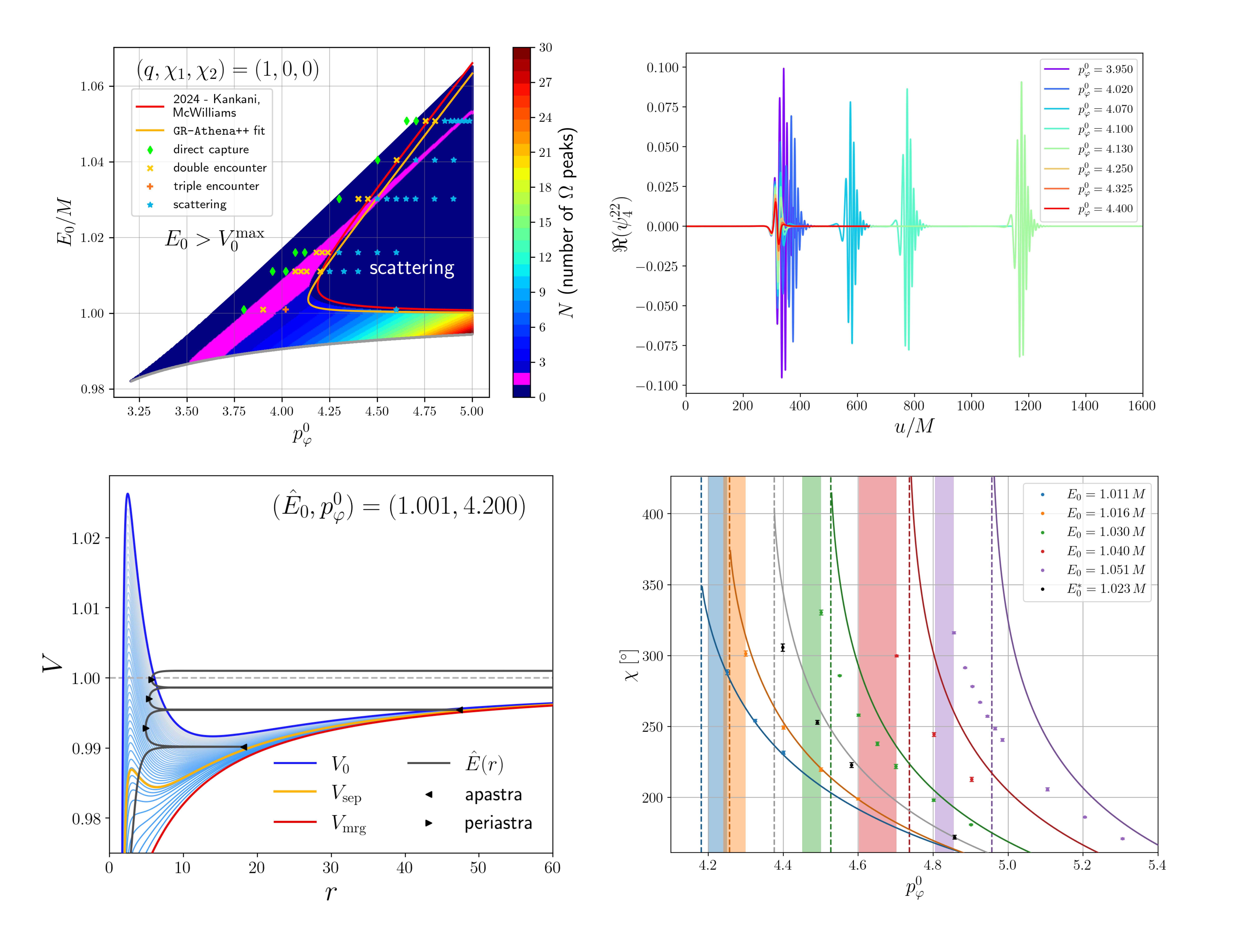Scattering and dynamical capture of two black holes: synergies between numerical and analytical methods
Dense astrophysical environments, such as globular clusters, could host populations of black holes undergoing scatterings and dynamical captures. The gravitational wave event GW190521 may have originated from such a system, underscoring the need for accurate descriptions to fully leverage the scientific potential of current and future gravitational wave detectors.
In 2405.20398, we studied scatterings and dynamical captures of two black holes by performing numerical relativity (NR) simulations with the code GR-Athena++, notably considering higher mass ratios and aligned spins. These results have been used to study the transition from scattering to capture and to validate the effective-one-body (EOB) model TEOBResumS-Dalí. We found a remarkable agreement for waveforms, energetic curves, scattering angles, and mismatches in the low energy regime (initial energy around or below 1.02 M). We also discussed the nonspinning test-mass limit, where we computed numerical waveforms by solving the Zerilli equation with the time-domain code RWZHyp for different dynamical capture scenarios. These results were then used to gain insights into the waveform properties and to test analytical prescriptions for EOB waveforms.
TEOBResumS-Dalí is publicly available.
Read more
